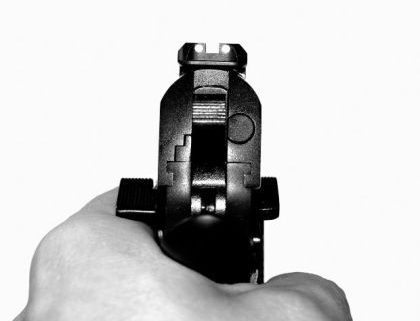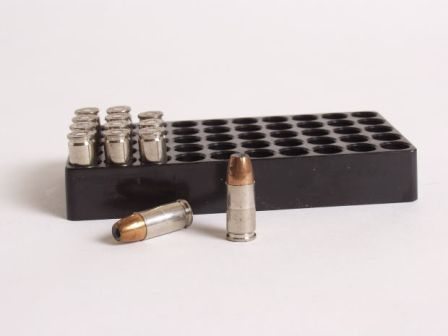Is Your Story “Four Rounds Short of a Full Brick?”
Like reading a really well-written novel, it’s easy to step into the world of TV cop shows where we see the inner workings inside the fictional police stations. We hear the chatter and jargon spoken among officers, the creaking of gun leather, and the jingle of keys and handcuff chains. If the actors a good enough at acting we sense the sudden tightening of the suspect’s muscles when they’re about to resist arrest.
I’ve been there, so I know what it’s like. Therefore, when I switch on the television to watch my personal favorite shows I know there’s a chance I’m going back to work, even if it’s only for an hour.
A few diehard police drama fans who have absolutely no background in law enforcement whatsoever wrote me to say that I don’t know what I’m talking about when it comes to certain areas of police procedure, and that I could learn a thing or two about it from the writers of their favorite shows. Yeah, I know. Duh …
One repeated complaint shows up when I mention an actor “racking” the slide on their pistol before entering a dangerous situation. The complaint – “Stupid blogger, the law/Constitution requires that police rack the slide of their weapons.”
For those of you who do not know, the racking of the slide serves two purposes (three if you count TV writers thinking it looks cool).
- One – racking the slide delivers a round from the magazine to the chamber. Until a bullet is seated in the chamber a pistol will not fire. And why won’t it fire? Because there’s no bullet in the chamber. Duh!
- Two – when a shooter racks the slide the action ejects the round that’s in the chamber, leaving the gun short one round. And, that live round is then rolling around on the pavement. Since we never see a round eject when TV cops rack a slide, then it’s safe to assume there was not a round in the chamber. More on this in a second.
That’s right, without a bullet ready to fire (in the chamber) the weapon is practically useless. Unless, of course, you want to use it to whack someone on the head. Or as an expensive doorstop, a fancy bookend, or unique paperweight. And this, a pistol with an empty chamber, is how many TV detectives carry their sidearms … not ready to fire/unable to fire when needed.
Actually, the chronic complainers/armchair cop experts tell me (sometimes in ALL CAPS) that I’m an idiot because everyone in their right mind knows it’s against the law, even for a police officer, to carry a live round in the chamber. One even took it a step further and went on to say that I should have my blogging license revoked. WHAT???
Well, cops DO (see, I can use all caps too) indeed keep a round chambered at all times (with the safety off, if the firearm is equipped with a safety). In fact, it’s almost second nature to police officers to do both before slipping their duty weapons into their holsters.
When you ask an officer how many rounds he/she carries in his/her weapon they’ll often respond with an answer something like, “Fifteen plus one.” This means they have a full magazine containing fifteen rounds and one in the chamber. Some officers take the answer one step further and include, “Plus I’m carrying two full magazines on my belt. That’s fifteen rounds in each magazine, for a total of forty-six rounds, including what’s in my pistol. Yep, I’m carrying forty-six rounds, four short of an entire brick.”
Brick = a full box of ammunition. The cardboard box containing the plastic insert and bullets is shaped like a small brick.
When loading their weapons, officers first insert fifteen bullets into the magazine (the number of rounds depends on the weapon carried). Next they shove/seat the full magazine into the pistol, pull back the slide and then release it. This action loads a round into the chamber. Then they eject the magazine, which now contains one less bullet (now 14) and replace the round that was loaded into the chamber. The pistol is then fully loaded to 15+1, or whatever number of rounds their particular weapon holds.
Weapons loaded to the +1 capacity (a full magazine plus one in the chamber) decreases the amount of time an officer needs to react when involved in a deadly shooting situation. The time an officer spends placing a round in the chamber could be the amount of time it takes to save his/her life, and that’s IF they’d remember to “rack the slide” when faced with a split-second need to use deadly force.
Forgetting to chamber a round, while under life-threatening stress, would be like going to a gunfight with an empty gun. Besides, when under fire, the last thing you want to do is to use up precious time chambering a round. Another important detail – racking the slide is noisy and the unmistakable sound could alert the bad guys that an officer is approaching.
So yes, officers always carry a fully loaded weapon, and that means with a round in the chamber. There’s no slide-racking in real life.
Examples of police firearm policy in the U.S.
Philadelphia Police Department
- All standard service weapons or authorized alternate weapons, when being carried on or off duty, shall be loaded to full capacity with city-issued ammunition. For pistols, this means the magazines shall be loaded to full capacity, with one round in the chamber.
San Antonio Police Department
.06 GENERAL RULES FOR CARRYING FIREARMS: SWORN OFFICERS
A. Uniformed Officers: Officers wearing the regulation uniform or the officer’s unit-specific uniform shall conform to the following:
- The Department-issued S&W M&P40 is the only approved primary handgun for uniformed officers to carry:
- The S&W M&P40 will be carried in an approved holster on the equipment belt.
- The S&W M&P40 will be carried with a round in the chamber and the magazine fully loaded.
- Two fully-loaded magazines will be carried in a magazine pouch on the equipment belt.
Frederick Maryland Police Department
.55 DUTY FIREARM ISSUANCE:
The standard issue duty firearm is the Glock model 17 9mm semiautomatic handgun. The Firearms Coordinator will issue duty firearms to sworn personnel. Duty firearms will be issued with three magazines and 46 rounds of authorized ammunition. The firearm will be carried with one round in the chamber, 15 rounds in a magazine in the firearm, and 15 rounds in each of the spare magazines.
Again – U.S. officers carry with a round in the chamber and safety off.







Excellent post, Lee. I always cringed at the wasted time, not counting the sound, of LEOs racking the slide in movies just before they aim at the bad guy. Do you know if the U.S. military officers stationed in foreign countries in World War II followed this same rule?